Hiking is a captivating outdoor pursuit that not only nourishes the soul with natural beauty but also serves as a full-body workout.
The myriad terrains and challenges of hiking demand the coordinated efforts of several muscle groups.
In this article, we will explore the primary muscles used in hiking, starting with the most crucial ones and then delving into those that provide support and stability along the way.
Let’s embark on this journey to discover the muscle symphony that accompanies every hiking adventure.
Contents
Hiking and Muscle Engagement: A Closer Look
In this section, we’ll take a closer look at the muscles that come into play during hiking. Learn how your body’s muscles work together to tackle the challenges of the trail.
1. Quadriceps: Powering Uphill Ascents
The quadriceps, located at the front of your thighs, are the undeniable stars of hiking’s muscle show. These muscles are heavily engaged when tackling steep inclines, as they extend your knees to push you uphill.
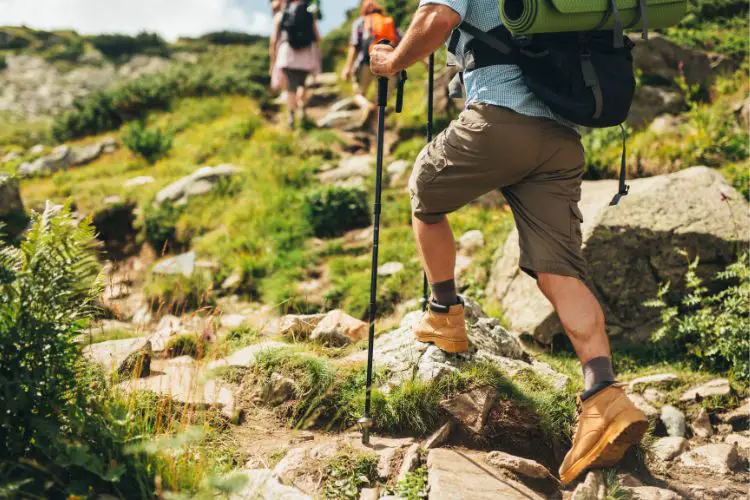
With every upward step, your quads contract, providing the strength needed to conquer even the steepest of trails.
Hiking up a challenging mountain trail, you’ll feel your quadriceps working tirelessly, propelling you upward with each determined step.
2. Hamstrings: Descending with Control
As you make your way downhill, your hamstrings step into the spotlight.
Found on the back of your thighs, these muscles help you maintain control and balance while descending. They bend your knees and extend your hips, acting as the body’s natural brakes on steep descents.
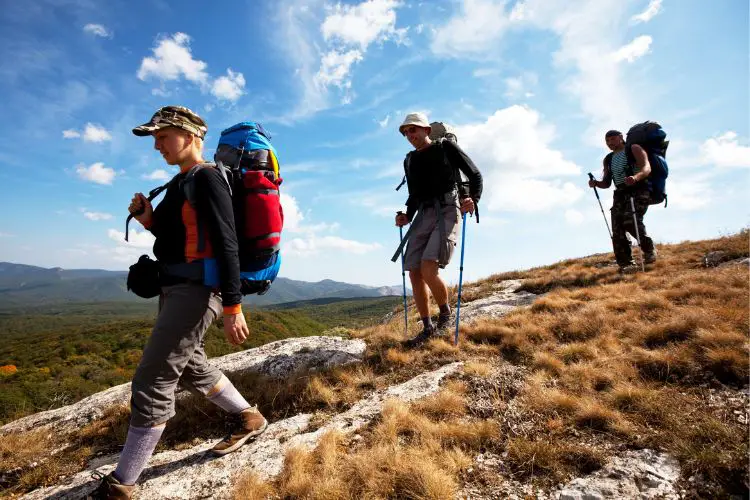
When descending a rocky slope, you’ll rely on your hamstrings to ensure a steady pace while preventing your legs from giving way under the force of gravity.
3. Glutes: Uphill Powerhouse
Your gluteal muscles, encompassing the gluteus maximus and medius, form the foundation of your hiking prowess.
These muscles, located in your buttocks, provide the thrust needed to ascend inclines. Picture your glutes as the engine that powers your uphill progress.

Climbing a challenging hill, you’ll feel your glutes contract with each step, propelling you forward and upward, giving you the strength to conquer the ascent.
4. Calves and Tibialis Anterior: Balancing Act
The calf muscles, including the gastrocnemius and soleus, are the unsung heroes of balance on uneven terrain.
They facilitate plantar flexion of your ankles, allowing you to push off with your toes when ascending hills and maintaining stability on rugged or unpredictable surfaces.
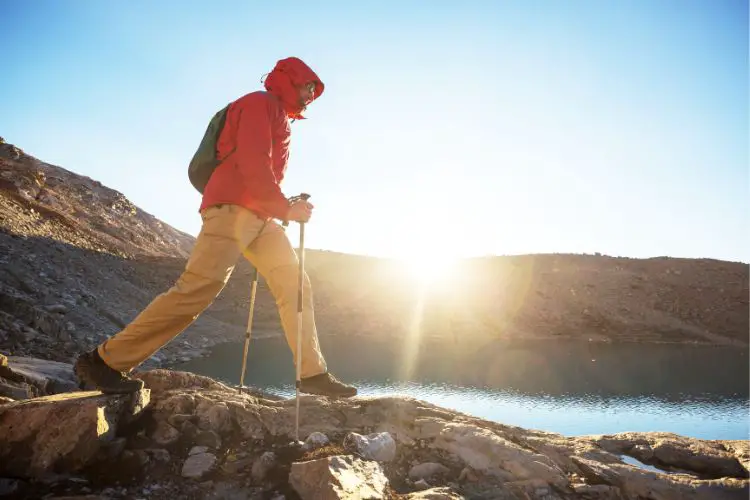
Your tibialis anterior, located along the front of your shins, plays a crucial role by enabling dorsiflexion, helping lift your toes and prevent tripping over obstacles like rocks and roots.
5. Core Muscles: Stability and Posture
The core muscles, comprising the rectus abdominis, obliques, and lower back muscles, play a pivotal role in maintaining stability and posture during hiking.
Your core acts as the body’s central pillar, ensuring you stay upright and balanced.
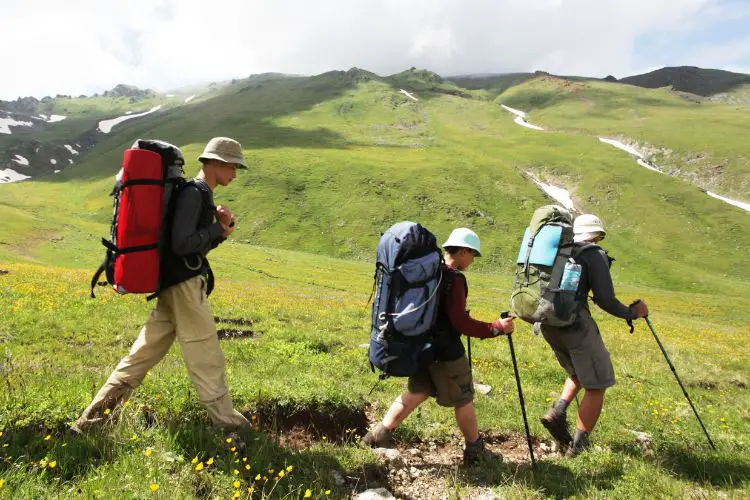
Whether you’re carrying a backpack or walking across uneven terrain, your core muscles work in harmony to prevent fatigue and maintain a strong, upright posture.
6. Hip Flexors: Stepping Forward
Located at the front of your hips, the hip flexor muscles are crucial for lifting your knees and flexing your hips. They enable a fluid stride, especially when stepping over obstacles or taking each step during your hike.
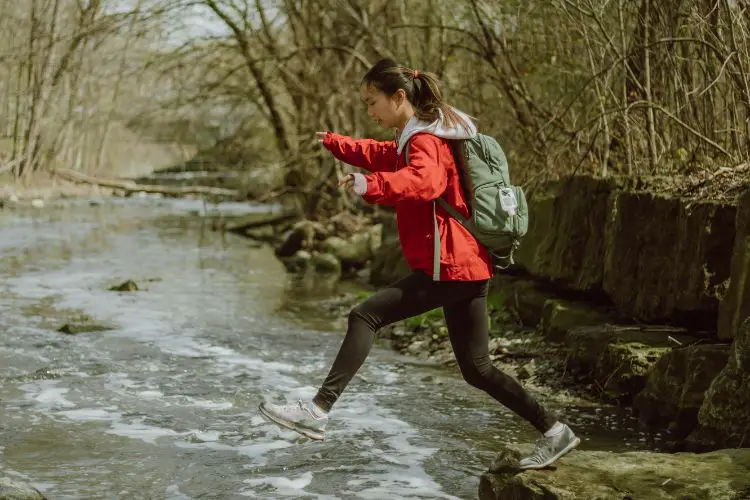
Crossing streams or ascending rocky terrain, your hip flexors are essential for maintaining an efficient and steady gait.
7. Supporting Muscles

While the aforementioned muscles are the stars of the hiking stage, it’s essential to acknowledge the supporting cast:
- Adductors: These inner thigh muscles stabilize your legs on uneven ground.
- Lats (Latissimus Dorsi): Your upper back muscles assist with arm movement and balance.
- Triceps: The back of your upper arms aids in extending your elbows for support and balance.
- Forearms: The muscles in your forearms come into play when gripping trekking poles or providing support on challenging terrain.
Optimizing Muscle Performance for Hiking
Once you’ve gained an understanding of the muscles actively engaged during hiking, it’s time to delve into how you can ensure they perform optimally on the trail.
The efficiency of your muscles can significantly impact your hiking experience, affecting your endurance, comfort, and overall enjoyment. Here are key strategies to consider:
1. Effective Warm-Up
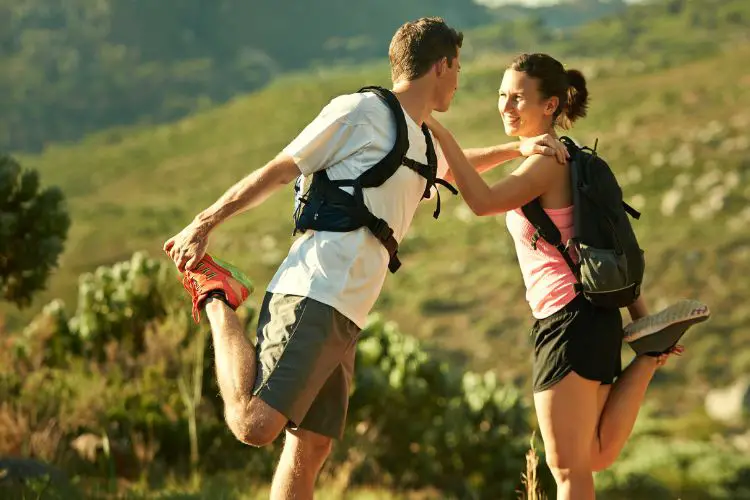
Before embarking on your hike, take the time to warm up your muscles.
Gentle stretching and mobility exercises can help prepare your muscle groups for the physical demands of the trail. Focus on the legs, hips, and core, as these areas play a crucial role in hiking.
2. Post-Hike Recovery
Don’t overlook the importance of post-hike recovery.
Stretching your muscles again after your hike can aid in preventing stiffness and soreness. Consider a cool-down routine to help your muscles relax and recover.
3. Strength Training

In your fitness routine, add strength training exercises. Target the muscle groups crucial for hiking, such as the quadriceps, hamstrings, glutes, calves, and core.
Building strength in these areas not only enhances your hiking performance but also reduces the risk of injury.
4. Muscle Balance
Pay attention to muscle balance. Imbalances between opposing muscle groups can lead to discomfort and injury.
Focus on exercises that promote balance and stability, addressing any weaknesses you may have.
5. Hydration and Nutrition
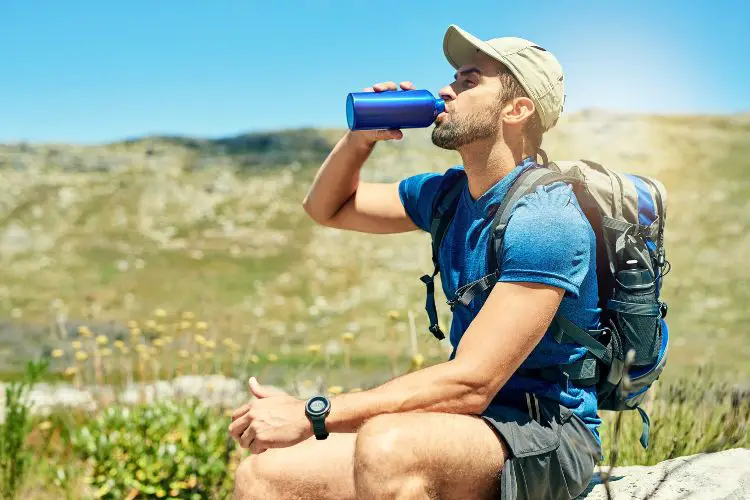
Proper hydration and nutrition are key factors in muscle performance. Dehydration can lead to muscle cramps and reduced endurance.
Ensure you consume enough water and nourishing snacks during your hike.
6. Preventing Cramps
To prevent muscle cramps, especially in the calves, maintain proper hydration and consider adding electrolyte-rich beverages or snacks to your pack.
Adequate potassium and magnesium intake can also help reduce the risk of cramps.
7. Technique Matters
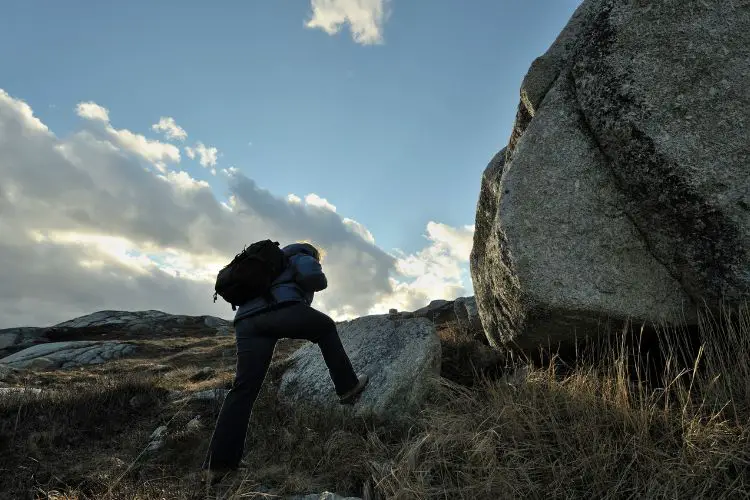
Efficient hiking technique can reduce muscle strain.
Learn how to distribute your weight, adjust your stride, and utilize hiking poles effectively to minimize muscle fatigue.
Related Questions
What Muscles Are Most Used When Hiking?
When hiking, several muscles are heavily engaged to provide the power and stability needed for this activity.
The muscles most commonly used during hiking include the quadriceps, hamstrings, glutes, calves, core muscles, hip flexors, and various stabilizing muscles.
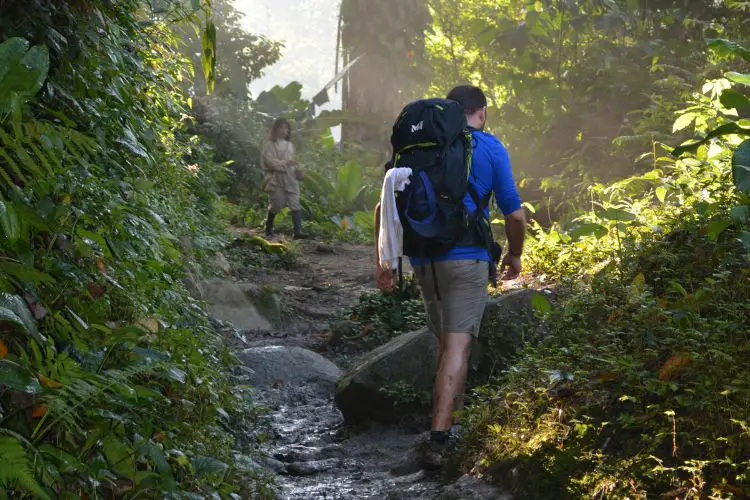
These muscle groups work together to power uphill ascents, control descents, maintain balance on uneven terrain, and ensure stability and posture throughout the hike.
The specific muscles used depend on factors such as the terrain, incline, and hiking technique.
Does Hiking Use Different Muscles Than Running?
Yes, hiking uses different muscles than running.
While both activities engage the lower body, running is primarily a repetitive, high-impact motion that heavily involves the quadriceps, hamstrings, calves, and gluteal muscles.
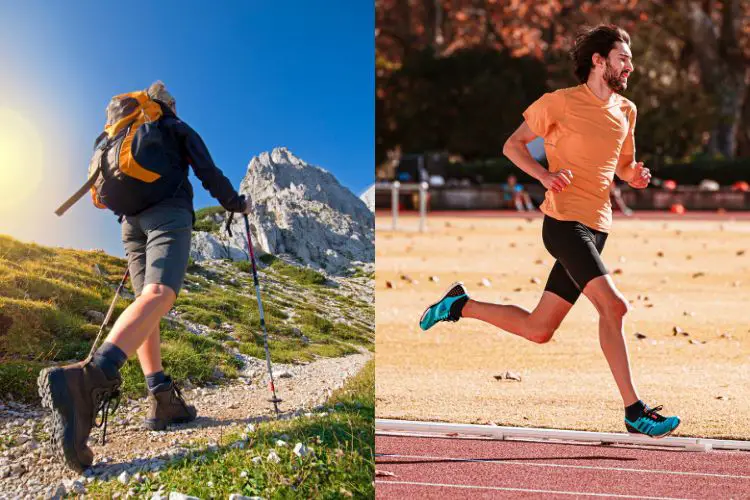
In contrast, hiking involves a more varied movement pattern, including uphill and downhill segments, uneven terrain, and obstacles.
Therefore, hiking engages additional muscles, such as those responsible for ankle stability, balance, and maintaining posture, including the core and various stabilizing muscles.
Additionally, the hip flexors and shins are more engaged in hiking due to the need to lift the legs to clear obstacles and maintain control on uneven surfaces.
So, while there is some overlap in muscle usage between hiking and running, hiking recruits a broader range of muscle groups due to its diverse and dynamic nature.
Recap
In conclusion, hiking is more than just a leisurely stroll through nature; it’s a harmonious interplay of various muscle groups.
Your quadriceps, hamstrings, glutes, calves, core, hip flexors, and supporting muscles work together to transform each hike into a full-body workout.
As you tackle steep inclines, descend with control, and navigate uneven terrain, remember the incredible physical journey that hiking offers.
So, the next time you embark on a hike, pay attention to the muscle symphony accompanying your steps and appreciate the remarkable fusion of nature and fitness that hiking brings to your life.
Happy hiking!

